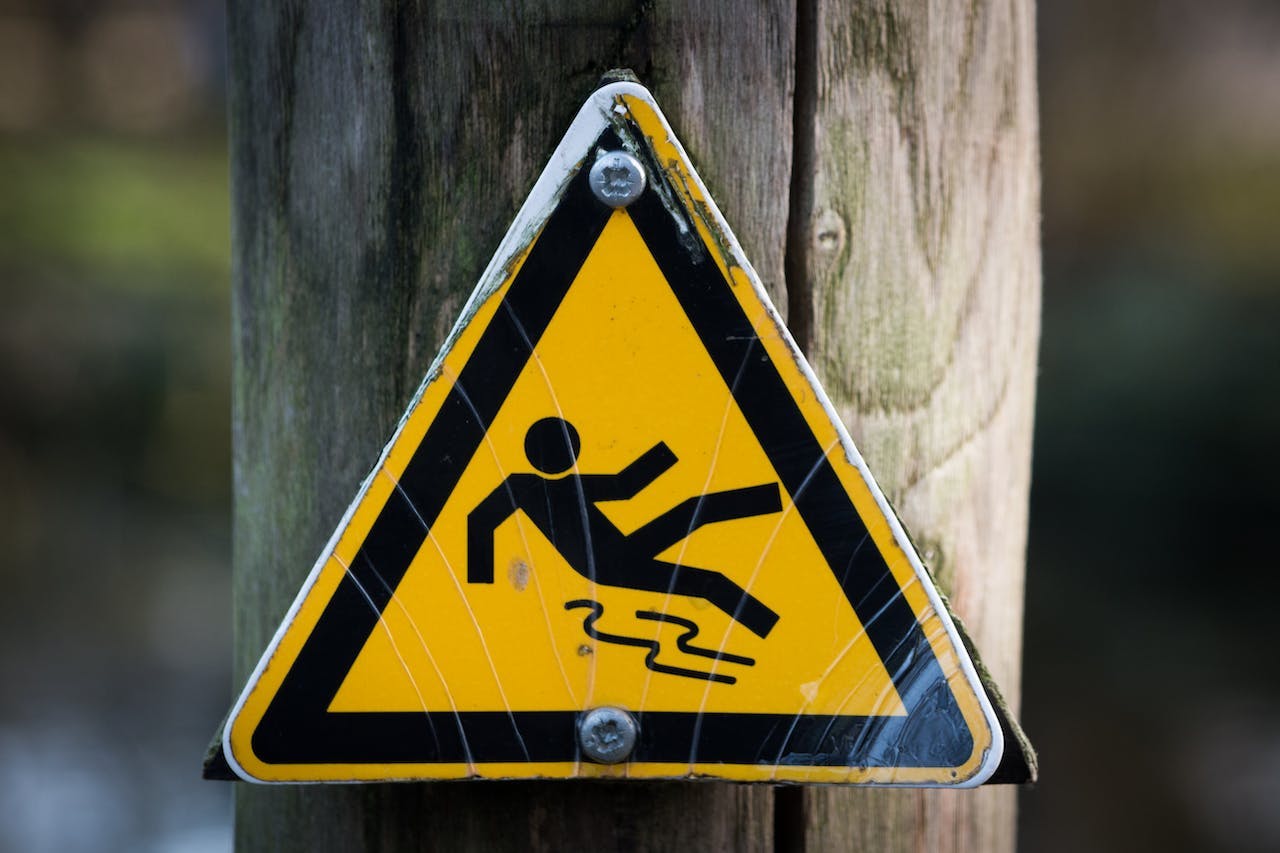Did you know that the global number of work-related deaths averages nearly 2 million people annually?
This shocking statistic comes from the ILO (International Labour Organization), and it’s no exaggeration. Sadly, many of these deaths could have been prevented by implementing proper control measures and eliminating risks in the workplace.
Industrial safety is a critical aspect of any business. Therefore, businesses must have a well-thought-out and effective health, safety, and environmental quality (HSEQ) management system in place to protect their employees, the public, and their reputation.
HSEQ auditing is one of the most essential tools for ensuring that your business’s HSEQ measures align with compliance standards. Auditing your company to ensure compliance with HSEQ policies and standards effectively increases business efficiency while minimizing risk and promoting a safe working environment. It also helps companies identify and address gaps in their current safety management system through an HSE audit and is a great way to evaluate the effectiveness of training and other initiatives, as well as during quality audits.
If mitigating risk and navigating compliance has been top of mind lately, keep reading to learn everything you need to know about HSEQ auditing and how you can ensure a safe, healthy workplace for all.
- What is an HSEQ Audit?
- The Importance of Workplace Inspections
- The Benefits of Workplace Audits
- Preparing For an Audit
- How to Implement an Audit in Five Simple Steps
- Step #1: Devise a Plan
- Step #2: Implement the Audit
- Step #3: Report the Findings
- Step #4: Corrective Action
- Step #5: Share the Results
- Boost Your HSEQ Audits By Going Digital
- Ready to Take Your HSEQ Audits to the Next Level?
What is an HSEQ Audit?
Understanding what it means to carry out a thorough HSEQ audit can help you implement, prepare for, or simplify your current auditing process. These audits are an assessment of your workplace used to identify hazards that can put your employees, the public, or the environment at risk.
The first two letters, HS, stand for Health and Safety and represent the short-term prevention of workplace injuries and accidents while promoting your employees’ long-term health and well-being.
The E stands for Environment and refers to reducing any negative environmental impact your company may produce, from waste management to reducing your carbon footprint.
The Q stands for Quality and represents the processes you have in place to monitor and control your output. The goal here is to maintain a high level of service to your customers without sacrificing health, safety, or environmental aspects.
While the terms “audit” and “inspection” are often used interchangeably, there is a subtle difference:
You can perform audits internally or externally to check for accuracy regarding a safety program in its entirety. In general, safety audits aim to answer three questions:
- Does the company have documented proof of compliance?
- Are employees receiving adequate training?
- Does the company work to mitigate or eliminate hazards?
There are five essential audits you should be aware of:
- Compliance audits: Ensures that workplaces comply with standards mandated by the state or territory legislation
- Management system audits: Are an assessment of your management’s commitment to safety culture
- Program audits: Verify that adequate safety measures are in place to spot risks and prevent workplace accidents
- Targeted audits: Can happen based on accidents, incidents, near misses, or legal and regulatory changes. Worker’s compensation insurance premiums increase with every injury claim, and employee injuries are the leading cause of claims. HSEQ audits help keep worker’s compensation insurance premiums to a minimum by eliminating unnecessary workplace hazards and, in turn, removing unwarranted claims.
- Comprehensive audits: Are the review of workplace policies and documents and the introduction of regular workplace inspections.
Inspections work to identify hazards while physically assessing the effectiveness of control measures in place. To ensure a safe and productive work environment, it’s essential for companies to maintain compliance with all relevant local and international legal requirements, as well as related industry standards.
Establishing an effective HSEQ framework is the best way to achieve this. It provides internal support in terms of safety and efficiency and valid documentation when inspected or audited.
It’s important to note that successful HSEQ strategies involve both technical and human aspects. Integrating digital systems makes your safety processes more transparent, precise, and accessible and can encourage employees to consistently follow the correct procedures.
Additionally, digital systems make it easier for management and staff to spot negligence while simultaneously highlighting positive examples that they can use to inspire other employees.

The Importance of Workplace Inspections
Inspections are a crucial part of workplace safety for several reasons, such as:
- Identifying potential workplace hazards
- Ensuring a safe work environment for all employees
- Properly training employees on safety procedures
- Assisting employers with the development and execution of safety processes to ensure the protection of their employees
- Testing the effectiveness of safety programs
- And more
Developing routine inspection procedures is mandatory for most organizations employing over ten people or for those operating heavy equipment or machinery. Check with the Occupational Safety and Health Association (OSHA) to see if the regulations apply to your business.
Remember that OSHA regulations are in place to keep you and your staff safe and maintain the integrity of your infrastructure, equipment, and environment, so it’s never a bad idea to follow them even if you’re exempt.
The Benefits of Workplace Audits
Workplace audits serve you and your business in two significant ways.
First, they ensure compliance with the law and keep you from violating your legal obligations or the OSHA standards. And secondly, they allow you to provide a safe workplace and protect employees from harm by continuously identifying areas of improvement.
The benefits of performing routine audits can be broken down into the following:
- Less exposure to liability and risk: By spotting and eliminating unnecessary hazards.
- Continuous improvement: By learning lessons, spotting inconsistencies, and implementing real-time insights into safety programs.
- Maximized compliance: Being proactive with safety concerns allows you to correct compliance issues before they become a violation.
- HSEQ commitment: Show your employees that you’re committed to protecting their well-being by implementing policies, practices, and procedures designed to keep them safe.
- Promote a safety culture: When all employees are on board with the importance and process of safety audits, they have increased awareness of potential hazards, making it easier to look out for one another.
Preparing For an Audit
You can’t expect to perform a HSEQ audit without proper preparation. You need to dedicate time to prepare and execute adequate corrections to get the most value from your safety audit. Here are some best practices to help improve your audit experience:
- Thoroughly train inspectors and auditors: To effectively identify hazards and be objective in the assessment of your safety program, the auditor you designate should show qualities like honesty, diplomacy, professionalism, curiosity, and logic.
- Take advantage of digital checklists: Digital checklists are a valuable asset when it comes to your safety audits, as they guide your auditor toward all critical issues ensuring nothing gets overlooked. Digital checklists are easy to maintain, and you can customize them to the needs of different audits. In addition, real-time access to checklist data and insights through a centralized system makes compiling reports a collaborative, user-friendly experience. Remember, the best checklists are ones customized to your company’s needs, such as:
- Electrical: Outlets, switches, breakers, fuses, connections, cables, grounding
- Buildings: Doors, windows, walls, stairs, floors, roofs, elevators
- Personal protective equipment: Respirators, glasses, footwear, gloves, dust masks, hard hats
- Safety devices: Limit switches, cutoffs, mirrors, sirens, valves, signs
- Strategic scheduling: Since audits can interfere with production, especially when auditors detect a hazard, you should schedule your audits when most of your employees are on shift, and all equipment is in full operation. Avoid scheduling during peak periods. To get the full value of the audit, the environment should be conducive to regular working periods.
- Documentation: You need accurate documentation to prove compliance and improve safety protocols. Paper-based record keeping is outdated, error-prone, time-consuming, messy, tedious, and full of liabilities. A digital solution like monitorQA streamlines documentation and securely stores it in the cloud for easy retrieval. As a result, it’s faster, more organized, and compliance-ready at your fingertips.

How to Implement an Audit in Five Simple Steps
The HSEQ audit process consists of five essential steps that systematically control hazards and create continuous improvements in organizational safety programs. The five steps are as follows:
Step #1: Devise a Plan
To get started, identify all areas of your business that you’re going to include in the HSEQ audit. You, your managers, supervisors, and your safety committee must agree on what the audit will involve and the criteria the processes will measure against. Topics of discussion should include the following at minimum:
- Emergency procedures
- Safety equipment
- Personal protective equipment (PPE)
- Employee training
- Sub-contractors
- Operating procedures
- Safety training
Step #2: Implement the Audit
As you implement your HSEQ audit, you should accurately document your findings. This is where digital inspection management software comes in handy, eliminating the need for pen-to-paper notes.
From assessing employee training to checking the machinery and interviewing workers, these are just a few ways to gain insight into the adequacy of your safety processes and procedures. Then, compare the audit results with the criteria you agreed upon with your team to get a better idea of the implications for the safety and well-being of your workforce. It is important to implement frequent HSEQ audits, both internally and with the help of an external auditor, to continually enhance safety policies and ensure a safe working environment for employees.
Step #3: Report the Findings
Make any hazards, compliance violations, or inadequate procedures or processes encountered during the audit part of the auditor’s report. You can only make improvements if you’re honest about shortcomings and identify where you need to take action.
Step #4: Corrective Action
Base your corrective actions on the HSEQ audit findings and recommendations for eliminating the risk. For example, in the case of faulty equipment, the disciplinary action would be to repair or replace it.
Another hazard example may be that a training session was too short to teach the required material adequately, and the employees felt rushed through without proper training. The corrective action, in this case, would be to extend the training session. Subsequently, each hazard will have its own calculated corrective action to enhance the safety of your workplace.
Step #5: Share the Results
As part of OSHA’s best practices and to facilitate a safety culture, you should inform your entire team each time someone takes corrective action and eliminates a hazard. Digital inspection management software lets you easily send team memos within the app, keeping everyone on the same page.

Boost Your HSEQ Audits By Going Digital
The main objective in performing audits is to eliminate hazards and reduce risks in the workplace. But to do that effectively, you need well-documented and accurate procedures, policies, and processes for every aspect of your HSEQ program. Paper-based documentation doesn’t cut it in today’s health and safety world, it’s too slow to keep up with the safety expectations of the modern workplace.
No more three-inch binders full of scattered policies, searching to find documented safety measures. With digital HSEQ audit management systems, your entire team can access HSEQ policies, procedures, and checklists with their mobile phone.
A digital solution drives auditing forward, empowering you to achieve continual safety improvements throughout your organization. When choosing a digital inspection solution, be sure the platform is customizable, user-friendly, and, most importantly, mobile-optimized.
Ready to Take Your HSEQ Audits to the Next Level?
Auditing is an essential part of workplace operations and employee safety. However, In the fast-paced, modern era we’re living in, relying on traditional paper-based methods of tracking and recording is ineffective and could pose significant liability issues.
Simplify your HSEQ audits, achieve greater efficiency, and employ continuous improvements throughout your auditing and compliance processes with monitorQA, a unified platform that keeps all your health and safety information centralized in the cloud.
monitorQA gives you easy access to insights and reports, mobile checklists, predesigned audit templates, customizable templates, corrective action monitoring, annotated pictures, signatures, GPS coordinates, timestamps, and more. A collaborative platform ensures each team member understands their workplace health and safety responsibilities and allows auditors a simpler way to access necessary information during inspections. Start your free trial today.
last modified:09.17.24
Recent Posts

Top 5 Food Processing Industry Trends That Matter in 2025

Keeping Up With Compliance Trends 2025

OSHA Ladder Safety 101: How to Meet OSHA Standards and Keep Your Workers Safe

Car Wash Safety: Regulations & Best Practices You Need to Know

Fall Hazards At Work: How To Keep Your Employees Safe

The High Price of Neglect: OSHA Violations and Penalties

Expert Advice on Preventing Workplace Electrical Hazards

Slips, Trips and Falls in the Workplace: Best Practices

Improve Safety: Inspection Management Software Benefits

Promoting Safe and Productive Working Environments: Occupational Health & Safety Tips to Consider
